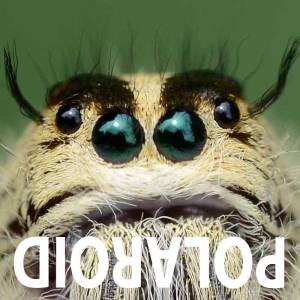Asian tiger mosquito
Aedes albopictus
I did a couple of hours researching and compiled a two page document on dengue fever, but in the end I decided that providing third hand information on a subject as important as this was wrong. It is enough to say that if you are contemplating a tropical or even sub-tropical trip, then you should Google dengue fever and spend an hour reading the more reputable sites, instead, I am just going to talk about the mosquitoes.
To be honest, with my recent track record for identifications, I am not even convinced that this is actually the offending Asian tiger, as some images that I found show the little beasty with distinct white bands on its legs. But, it is black and white and looks like a mosquito, this is enough to make my skin crawl, confronted by the most feared insect in Indonesia.
There are only two types of mosquito that can transfer the virus, the dengue mosquito Aedes aegypti and the Asian tiger mosquito Aedes albopictus, both distributed world wide and both black and white. The aegipti mosquito prefers a tropical climate, but the Asian tiger is much more adaptable and can stand more temperate climates. Both mosquitoes have adapted to human habitat and both feed aggressively on human blood, the aegipti exclusively but the tiger will also feed on animals, domestic and wild.
The mosquitoes breed in any still water that it can find, plant pots, old tires, tin cans, blocked gutters, etc. There is no cure or vaccine for the dreaded disease, so the only way to control the spread is to control our environment and remove all standing water and deny the mosquito of its breeding grounds. It is suspected that the Asian tiger was brought to the USA by the import of used tires from Asia for the tire retreading trade.
The mosquitoes are harmless until they have bitten a human that is in the fever stage of the disease. It then takes 8 - 10 days for the virus to grow and reach the saliva glands of the mosquito and become infectious. The mosquito only lives for a couple of weeks and does not move more that 100m in its short life, so it is actually quite difficult to catch the disease. The spread of the virus was not the fault of the mosquito, we are the carriers. Dengue is a human feeding virus and the mosquitoes are unaffected.
The mosquito will lay upto three batches of one hundred eggs in its short life span. The eggs are hardy and can stand desiccation for a year and still hatch successfully when rehydrated. It is going to be very difficult to eradicate the disease totally as it is suspected that the virus will be sustained by Asian primates.
Scientists are close with the development of a vaccine and expect to have something distributable by 2015. Success has also been achieved in the field of gene manipulation, were the males have been genetically altered to produce sterile offspring. Successful tests have been performed in the Cayman islands, reducing the infection population by 75%, but genetic solutions are rightfully feared by us humans. Personally I think this is a good solution and things are getting so bad that we may not have a choice but to let the genetic boys have a stab.
Dengue has been around for a long time but fifty years ago it was virtually unheard of, now it is starting to overtake malaria as the biggest cause of infant mortality in the world and it is spreading at an alarming rate. The Asian tiger mosquito can be found in 26 states of the USA and is expected to hit Europe in the next year or two. Scary!
Dave
- 12
- 2
- Nikon D7000
- f/6.3
- 105mm
- 400

Comments
Sign in or get an account to comment.


